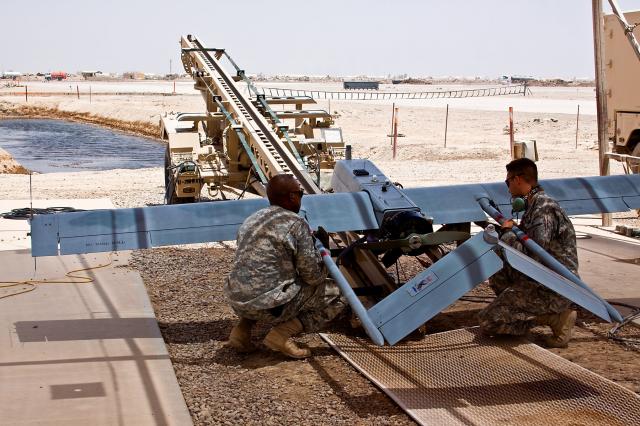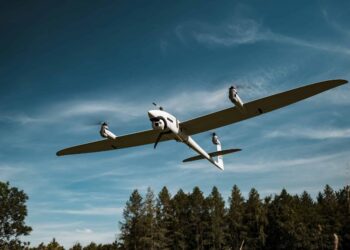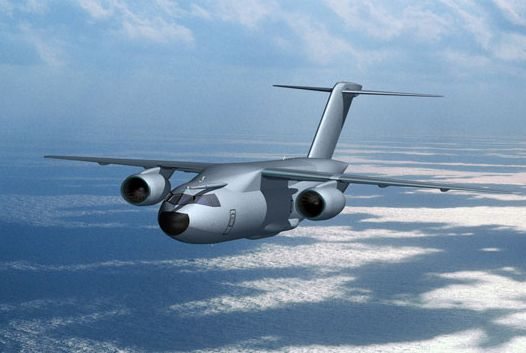When the Afghan theater commander called on the Army to increase the number of Shadow platoons in theater during the height of the 2011 Operation Enduring Freedom summer campaign, the Army was ready to answer the call.
Gen. David Petraeus, who was the Afghan theater commander at the time, saw the need to put more “eyes in the sky” as critical to the success of the campaign.
There was only one problem.
The very thing that made the RQ-7B Shadow unmanned aircraft system so attractive was also a limitation.
Shadow platoons are an organic support to their parent brigade combat team and Special Forces groups. That means that to deploy a platoon separate from its parent BCT would strip that brigade of its UAS platoon during its next deployment. With a Boots on the Ground/Dwell ratio, which is the time deployed vs. time home at nearly 1:1, it meant there were no uncommitted forces in the active Army component.
“Even the Army National Guard, that were also heavily committed at the time, could not support the request,” said Todd Smith, deputy product manager for Ground Maneuver Unmanned Aircraft Systems, or UAS. Their issue was compounded by an even longer dwell requirement that would remove the unit from the rotation for four years after commitment.
The team, which consisted of the Army Staff, the UAS Project Office, National Guard Bureau, and AAI, began working feverishly to find a solution to provide immediate support to the Soldiers in theater.
The Shadow is the Army’s medium-sized UAS that, while not as capable as larger platforms such as the MQ-1C Gray Eagle or the MQ-9 Reaper, has built a solid reputation as a dependable workhorse, surpassing all other Army UAS in flight hours with more than 700,000 logged and has been very successful at meeting the brigade and below missions. The Shadow system is designed for a crew of 22 and provides 12 hours of reconnaissance in a 24-hour period.
Timing was critical to the success of the Afghan summer campaign.
All the U.S. military services were called by Secretary of Defense Robert Gates to find a solution to close this capability gap. While several ideas for incremental improvements were suggested, none were sufficient in scope, according to Smith.
But after much debate, the Army proposed a bold shift in how Shadow platoons would be employed and focused on increasing their operational tempo instead of just adding more units.
“Simply put, the Army suggested adding an additional Ground Control Station, two aircraft and nine contract personnel to each brigade’s Shadow platoon with the intent of facilitating a second mission string per day,” Smith said. The contractors would take over the launch and recovery duties of the platoon freeing the Soldiers to concentrate on flying the actual missions.”
“The result effectively doubles platoons’ potential operations tempo, or OPTEMPO, while requiring the addition of less than half the personnel and equipment of another platoon,” Smith said.
The Army had previously experimented with a similar concept when it deployed in 2010 with the 101st Airborne Division, according to Smith.
“We called it the ‘Super Platoon,’ which was a 35-Soldier concept that originated early in the program to meet increased operational and maintenance requirements.”
The concept added one additional GCS and a handful of contract operators to expand the Shadow coverage within a BCT’s area of responsibility. While this initiative was not originally intended to increase OPTEMPO, it did show the viability of the idea and did not break the Army’s redline resourcing requirements. More importantly, it proved very cost effective.
The secretary, seeing that this initiative exceeded the original support request, approved the Army’s plan with one change.
In the Army’s original plan, the standing up of nine sites would be a phased approach over the next year to allow time to train the needed contractors. The secretary, mindful of the importance of the current campaign season, requested the plan be accelerated through the use of Soldiers.
However, this request, which equated to approximately four platoons of personnel, placed the Army back into its original predicament. “We were again unable to source additional platoons without stripping them from other deploying units,” Smith said.
The issue was quickly overcome, however, thanks to the timely input of the Army National Guard, or ARNG, staff that identified four platoons that had not deployed with the parent platoon either because they were fielded after the BCT had deployed or because the BCT had a mission that didn’t require the Shadow Platoon.
“As this was a one-time mobilization, the Guard felt confident this deployment would not impact their ability to meet mission,” Smith said.
The end result became the initiative called “Enhanced Platoons” that nearly doubled Shadow support to Operation Enduring Freedom, or OEF, while preserving their organic relationship with the BCTs and Special Forces groups that have made them so successful.
With the units identified, the involuntary mobilization of these personnel was quickly approved, waiving the normal 180-day notice and reducing the time to less than 30 days to be at their mobilization stations.
To further accelerate the deployment, the Army and ARNG were able to shorten the predeployment training from 90 to 30 days, allowing the first platoons to arrive in theater less than two and a half months from first notification.
With the immediate requirement to get personnel and equipment deployed resolved, the Army, working through the UAS Project Office, began building their contractor replacements.
Previously, the Army had created four government-owned contractor-operated platoons that were deployed to Afghanistan in support of Special customers. PM UAS was able to leverage this contracting vehicle and their training site at Dugway Proving Ground, Utah, to create the additional personnel needed to man the sites.
While the original plan was to push the contractors in as soon as each site team was trained up, the introduction of the ARNG personnel allowed the Army to delay their deployment and align them with the ARNG nine-month rotation.
In May, the last of the ARNG personnel were replaced by contactors, turning the effort into an enduring mission.
“Born of a great need, this effort surpassed all expectations in both speed of deployment and quality of support,” Smith explained.
Although the original request was to satisfy a short-term surge requirement, less than two months after the first unit’s arrival, theater leadership requested the support be extended indefinitely as the new Shadow baseline. This request and resulting solution proposed by Soldiers and civilians has fundamentally changed how the Army fights the Shadow system.
Feedback from theater has been very positive since deployment of the enhanced platoons, Smith said.
“Over the last year, Shadow platoons have flown 111,000 hours, the majority of which were in Afghanistan,” Smith said. “The surge enabled units to fly over 10,000 more hours in OEF than previous years.” Additionally, they were able to maintain over 96 percent availability during this period.
The National Guard surge provided much-needed support to the war in OEF when it appeared none was available. AAI, the maker of the Shadow system, responded quickly and efficiently to support the initial surge, Smith said, and is now providing contractor personnel to replace returning Soldiers.
“The true success of this effort rests with the Soldiers and civilians who overcame every obstacle to support the Soldiers downrange,” he said.











